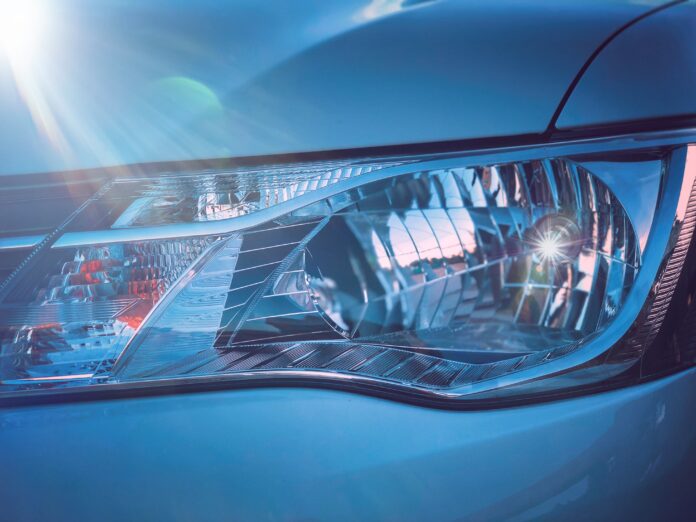Evtol stands for Electric Vertical Takeoff and Landing, and it represents a revolutionary advancement in the field of transportation. Evtol aircraft are electrically powered vehicles that have the capability to take off and land vertically, eliminating the need for traditional runways. These futuristic vehicles are designed to provide efficient, environmentally-friendly, and safe transportation solutions for urban areas, offering a new dimension to urban mobility.
Evtol, Evtol, Evtol – these three words are transforming the way we think about transportation. With the rapid advancements in electric propulsion and autonomous technologies, the concept of Evtol has gained significant attention from industry leaders, innovators, and researchers around the world. This emerging field has the potential to reshape urban transportation, reduce congestion, and provide a sustainable alternative to traditional modes of transport.
The fundamental principle behind Evtol aircraft is to combine vertical takeoff and landing capabilities with electric propulsion systems. This allows these vehicles to operate in confined urban spaces, taking off and landing vertically, much like a helicopter, but with the added advantage of being powered by electricity. By harnessing electric power, Evtol aircraft can significantly reduce greenhouse gas emissions, noise pollution, and reliance on fossil fuels.
One of the key features of Evtol aircraft is their ability to transition from vertical takeoff to horizontal flight. This is achieved through the use of innovative design elements such as tilt-wing, tilt-rotor, or distributed propulsion systems. These configurations enable the aircraft to shift from a vertical position to a more aerodynamically efficient horizontal flight mode, increasing speed and range while maintaining stability and control.
The electric propulsion systems used in Evtol aircraft consist of electric motors or ducted fans powered by batteries or fuel cells. These systems offer several advantages over conventional internal combustion engines, including higher efficiency, reduced noise, lower maintenance requirements, and zero tailpipe emissions. Furthermore, the use of electric power enables precise control of the aircraft, enhancing safety and maneuverability.
Evtol vehicles are envisioned to operate autonomously, relying on advanced sensor technologies, artificial intelligence, and communication systems. These capabilities allow for autonomous flight, obstacle avoidance, and efficient route planning, optimizing the use of airspace and ensuring safe operations. Additionally, autonomous Evtol aircraft have the potential to alleviate the burden of pilot training and certification, making air transportation more accessible and affordable.
The potential applications of Evtol technology are vast and varied. These aircraft could be used for urban air mobility, providing on-demand transportation services within cities. Passengers could book a ride using a mobile app and be whisked away to their destination, bypassing traffic congestion on the ground. Evtol aircraft could also be employed for medical emergencies, delivering medical supplies, or providing search and rescue operations in remote or disaster-stricken areas.
Furthermore, Evtol technology has the potential to revolutionize the logistics and transportation industry. Companies could utilize Evtol aircraft for faster and more efficient delivery of goods, bypassing road traffic and optimizing supply chain operations. With the rise of e-commerce and the increasing demand for speedy deliveries, Evtol aircraft could offer a transformative solution for last-mile delivery challenges.
Despite the immense potential of Evtol, there are several challenges that need to be addressed for its widespread adoption. One of the primary concerns is the infrastructure required to support Evtol operations. Vertiports, which are similar to helipads, would need to be established in urban areas to serve as the takeoff and landing points for Evtol aircraft. These vertiports would require appropriate charging or refueling facilities, as well as air traffic management systems to ensure safe and efficient operations.
Another challenge is the development of lightweight and high-capacity batteries or alternative power sources. The limited energy storage capacity of current battery technologies poses a significant constraint on the range and performance of Evtol aircraft. To achieve practical and commercially viable operations, advancements in battery technology are crucial. Researchers and engineers are actively working on developing high-energy-density batteries that can provide longer flight durations and faster charging capabilities. Additionally, alternative power sources such as hydrogen fuel cells are being explored, which could offer extended range and reduced charging times.
Safety is another critical aspect that needs to be carefully addressed in the development of Evtol aircraft. As these vehicles are expected to operate in densely populated urban areas, stringent safety measures and regulations must be in place to ensure public trust and confidence. Comprehensive certification processes, robust fault detection and redundancy systems, and effective air traffic management systems are essential to mitigate risks and maintain the highest safety standards.
aviation industry is another important consideration for Evtol aircraft. Traditional helicopters are known for their high noise levels, which can be disruptive in urban environments. Evtol manufacturers are actively working on designing quieter propulsion systems and implementing noise-reducing technologies to minimize the impact on communities. By employing advanced aerodynamics, electric propulsion, and innovative rotor designs, significant progress has been made in reducing noise emissions, making Evtol aircraft more suitable for urban operations.
The economic viability of Evtol operations is a key factor for its widespread adoption. The initial costs associated with the development and manufacturing of Evtol aircraft may be higher compared to traditional aircraft. However, as the technology matures and production scales up, economies of scale are expected to drive down costs. Additionally, the operational savings achieved through reduced maintenance, lower energy costs, and improved efficiency can offset the initial investment, making Evtol an economically attractive option.
Regulatory frameworks and policies play a crucial role in the successful integration of Evtol aircraft into existing airspace. Governments and aviation authorities are actively engaged in developing guidelines and regulations to ensure the safe and efficient operation of Evtol vehicles. Collaborative efforts between industry stakeholders and regulatory bodies are necessary to establish standardized procedures, airworthiness requirements, and operational guidelines that foster innovation while ensuring public safety.
Several major players in the aviation industry, as well as startups and technology companies, have recognized the potential of Evtol and are investing significant resources in its development. Partnerships and collaborations between aerospace manufacturers, electric vehicle companies, and technology firms are driving innovation and accelerating the progress of Evtol technology. The industry is witnessing a surge in research and development activities, prototype testing, and demonstration projects, indicating the growing momentum behind Evtol.
In conclusion, Evtol represents a transformative leap in the field of transportation. With its electric propulsion, vertical takeoff and landing capabilities, autonomous features, and potential for reducing congestion and emissions, Evtol has the potential to revolutionize urban mobility and logistics. However, challenges such as infrastructure development, battery technology, safety regulations, noise reduction, and economic viability need to be addressed for its successful integration. With ongoing research, advancements in technology, and collaborative efforts, the future of Evtol looks promising, offering a new era of efficient, sustainable, and accessible transportation.














